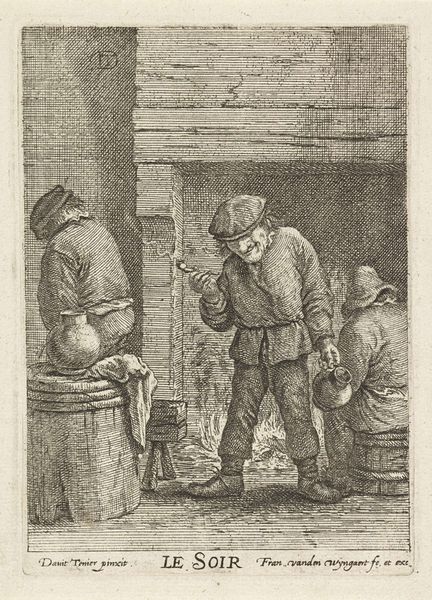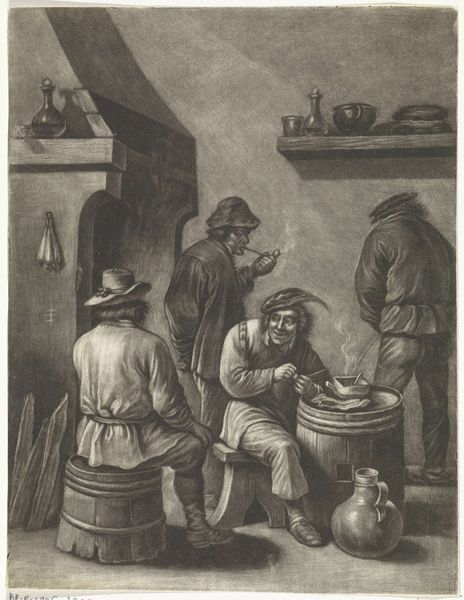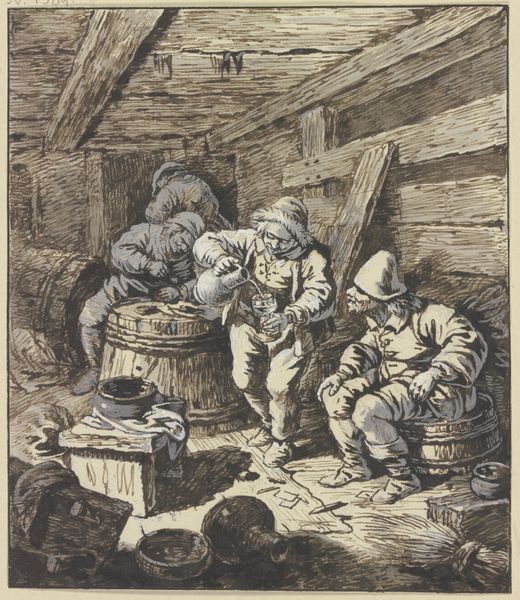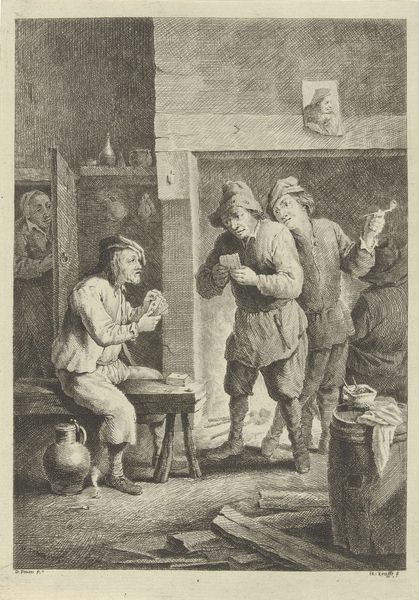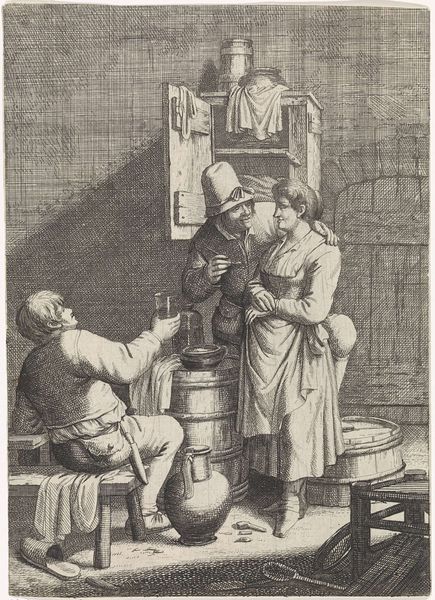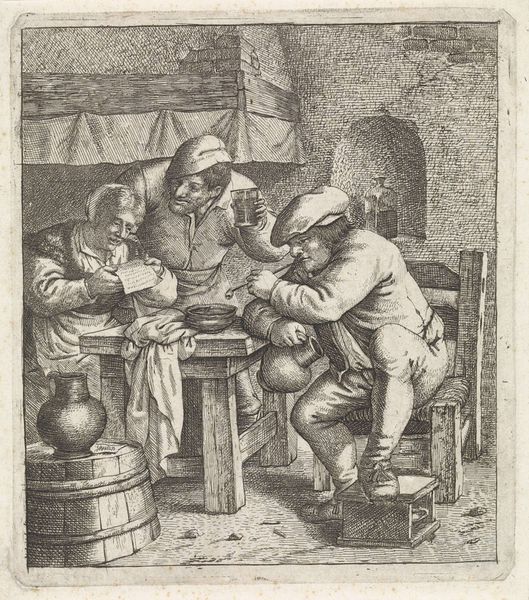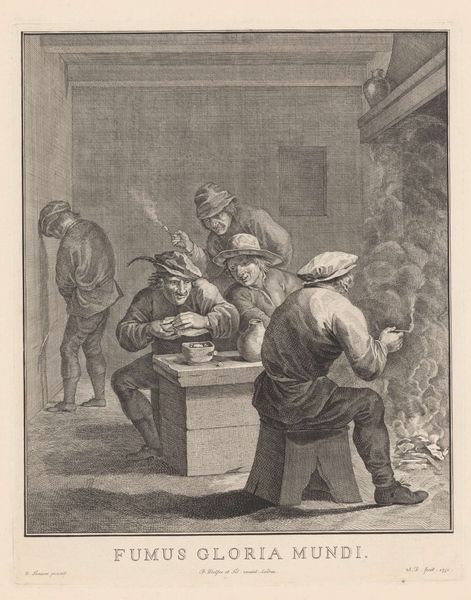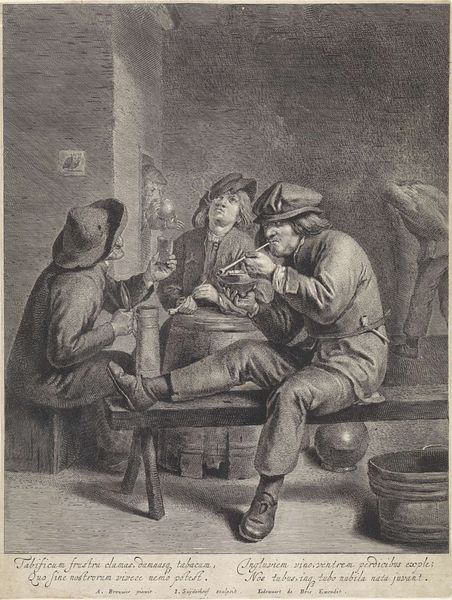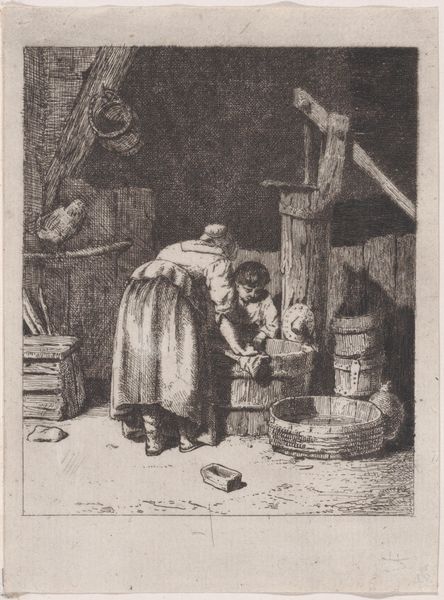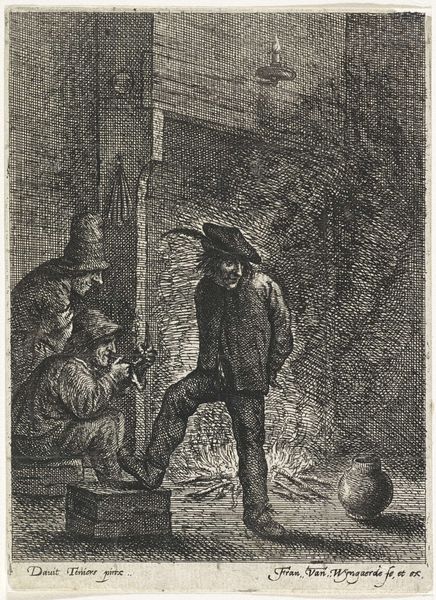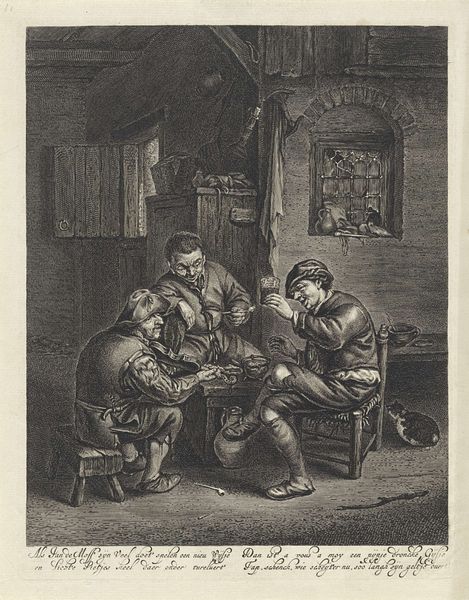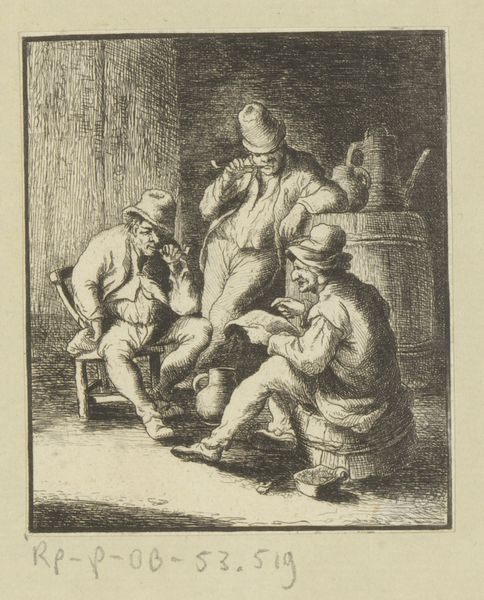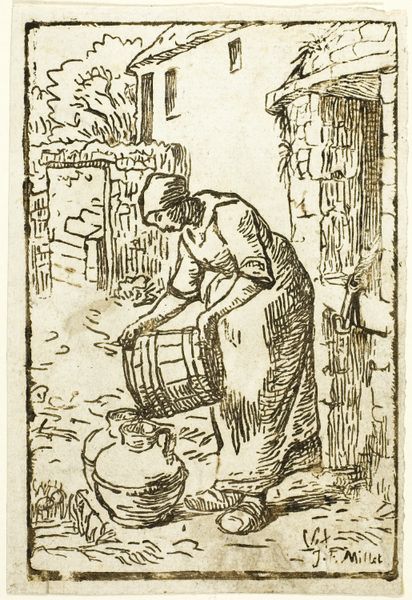
engraving
#
baroque
#
dutch-golden-age
#
old engraving style
#
figuration
#
genre-painting
#
engraving
Dimensions: height 122 mm, width 89 mm
Copyright: Rijks Museum: Open Domain
"Avond" was made by Frans van den Wijngaerde in the 17th century, using the technique of etching. This printmaking method involves coating a metal plate with wax, scratching an image into it, and then bathing it in acid, which bites into the exposed lines. Look closely, and you’ll notice the artist has used thin and densely clustered marks to create tone. Consider how the etched lines capture the scene's material reality – the rough clothing of the peasants, the texture of the fireplace, the smoke from the pipe. These are all effects achievable through skilled manipulation of the etching process. Prints like this one were essentially multiples, a way to disseminate images widely. In this period, such scenes of everyday life became popular subjects, reflecting a growing interest in the lives of ordinary people, and the realities of labor. The artist's labor is also reflected in the plate. Thinking about the materials and processes involved in creating "Avond" helps us appreciate its artistic value and its connection to broader cultural and social trends.
Comments
No comments
Be the first to comment and join the conversation on the ultimate creative platform.
